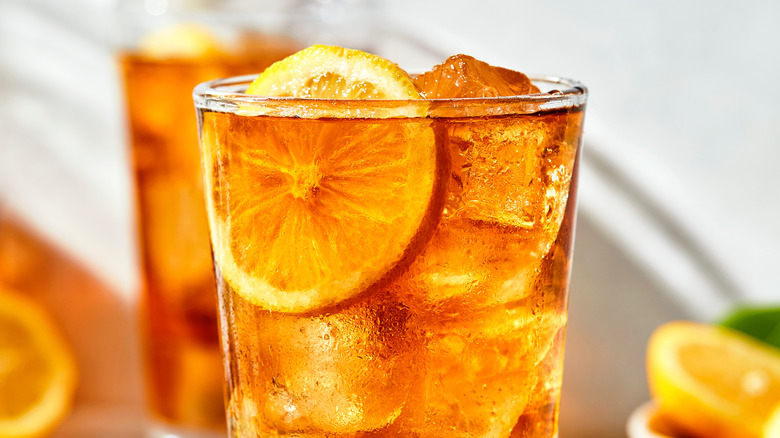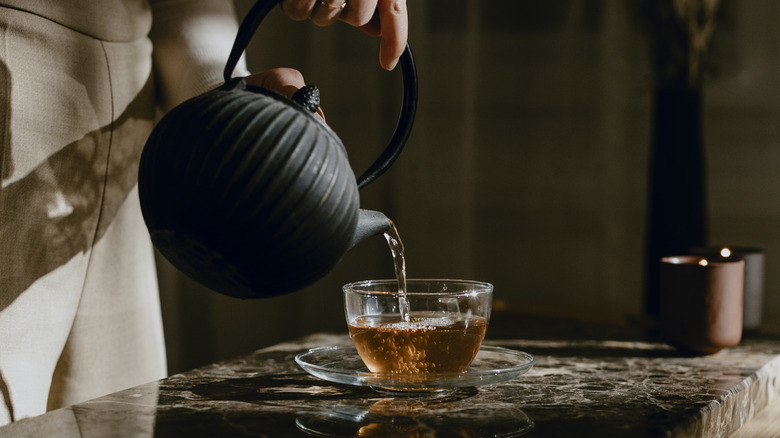Why Temperature Matters When Steeping Bags For Iced Tea
There is never a better time to have some cool and refreshing iced tea than when the weather is warm and the sun is shining. It's a cultural staple in the American South and just an overall nice thing to sip on. And while iced tea is one of the easiest things you can make from scratch, there is one major pitfall novice tea drinkers should be aware of, and that's the brewing temperature.
Heat can have a tremendous effect on both the flavor and appearance of your iced tea. The temperature of the water you use to brew your tea could mean the difference between clear, crisp, and mellow iced tea, and a cloudy, bitter mess. Black teas, which are the most popular variety in the world, should be brewed in water that's just under boiling, which is 212 degrees Fahrenheit.
In spite of its popularity, black tea is hardly the only variety worthy of the iced tea treatment. There are several alternatives that are brilliant for making iced tea, but they shouldn't be brewed quite so hot.
Different teas brew at different temperatures
You've likely burned tea before, but we don't mean you forgot about it on the stove and boiled off all the liquid. Burning tea means that you've brewed it in water that is far too hot. The water over-extracted the tannins in the tea, making it extremely bitter. While the 200- to 212-degree range may be good for most black teas, it's not so good for other varieties.
More delicate varieties like green teas, white teas, Oolong teas, and purple teas are best brewed a bit cooler. Green, white, and purple teas should be brewed between 175 to 180 degrees Fahrenheit, while Oolong likes things a little warmer at 195 degrees. Heartier teas, such as Rooibos, herbal, and extra dark Pu-er teas, have their sweet spot in the black tea range. Botanical teas like things just as hot; since botanicals aren't leaves, they won't burn and actually need the hottest water possible for optimal flavor extraction.
If you're brewing your tea at the right temperature but are still getting a cloudy product, the culprit is likely inadequate filtration or the type of water you're using. Traditional tap water is typically considered too harsh to provide premium flavor owing to its concomitant minerals and chemicals. For something a little purer, try using softer spring water. Another way to avoid cloudiness is to allow your tea to cool to room temp before adding ice or popping it in the fridge.

